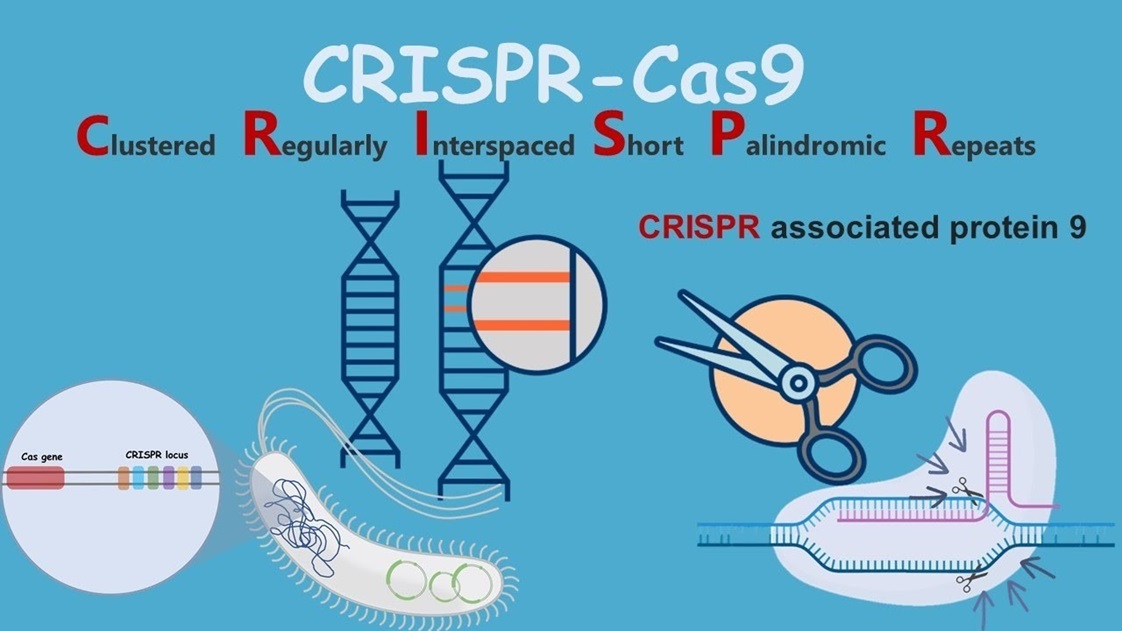- Courses
- GS Full Course 1 Year
- GS Full Course 2 Year
- GS Full Course 3 Year
- GS Full Course Till Selection
- Answer Alpha: Mains 2025 Mentorship
- MEP (Mains Enrichment Programme) Data, Facts
- Essay Target – 150+ Marks
- Online Program
- GS Recorded Course
- Polity
- Geography
- Economy
- Ancient, Medieval and Art & Culture AMAC
- Modern India, Post Independence & World History
- Environment
- Governance
- Science & Technology
- International Relations and Internal Security
- Disaster Management
- Ethics
- NCERT Current Affairs
- Indian Society and Social Issue
- NCERT- Science and Technology
- NCERT - Geography
- NCERT - Ancient History
- NCERT- World History
- NCERT Modern History
- CSAT
- 5 LAYERED ARJUNA Mentorship
- Public Administration Optional
- ABOUT US
- OUR TOPPERS
- TEST SERIES
- FREE STUDY MATERIAL
- VIDEOS
- CONTACT US
CRISPR/Cas9: A Gene-Editing Technology
CRISPR/Cas9: A Gene-Editing Technology
15-06-2024

Researchers have recently made exciting advancements by using CRISPR/Cas9 to modify photosynthesis for the first time.
- This innovative technology holds immense potential in various fields of science and medicine.
What is CRISPR/Cas9?
- CRISPR:
- CRISPR stands for Clustered Regularly Interspaced Short Palindromic Repeats.
- It is a remarkable gene-editing technology capable of altering specific genes' genetic sequences.
- CRISPR allows for precise removal, addition, or modification of DNA segments.
- CRISPR's Applications:
- CRISPR enables quick, affordable, and straightforward correction of genome errors.
- It facilitates the activation or deactivation of genes in cells and organisms.
- Development of CRISPR:
- CRISPR's development was inspired by a natural gene-editing system found in some bacteria.
- Bacteria use this system to defend themselves against invading pathogens like viruses.
- CRISPR's Mechanism:
- Bacteria utilize CRISPR to recognize and target specific viral DNA sequences.
- They retain fragments of viral DNA to enhance future defense against the same virus.
- CRISPR-Cas9 System:
- CRISPR-Cas9 comprises two crucial molecules that induce DNA changes (mutations):
- Cas9 Enzyme:
- Acts like "molecular scissors," capable of cutting DNA strands at specific locations.
- Facilitates the addition or removal of DNA segments.
- Guide RNA (gRNA):
- Consists of a pre-designed RNA sequence.
- Guides Cas9 to the intended region of the genome for precise cutting.
- Cas9 Enzyme:
- CRISPR-Cas9 comprises two crucial molecules that induce DNA changes (mutations):
- CRISPR-Cas9 Process:
- The guide RNA binds to a specific DNA sequence.
- Cas9 follows the guide RNA to the same DNA location and makes a cut across both strands.
- Researchers leverage the cell's DNA repair mechanism to modify the DNA.
- Additions, deletions, or replacements of genetic material can be made.
Applications and Potential of CRISPR/Cas9:
- CRISPR-Cas9 offers immense potential as a tool for treating various medical conditions with genetic components.
- It holds promise in addressing diseases such as cancer, hepatitis B, and even high cholesterol.
What is Genome:
- A genome represents the complete set of genetic information in an organism.
- It includes all the necessary information for the organism's functioning.



